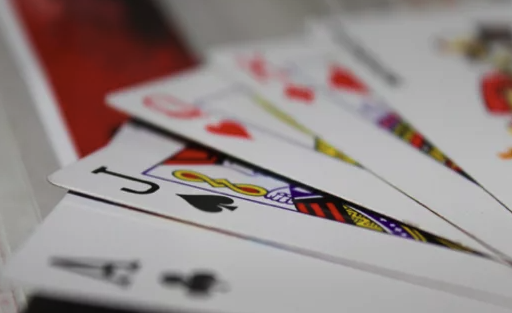Glossary Term
Heads Up
Heads Up
Used In: Blackjack
Introduction
In blackjack, the term “heads up” denotes a game situation where only two participants remain active at the table: the dealer and a single player. Unlike standard rounds involving multiple players, heads up play isolates the dynamic to a direct confrontation between one player and the dealer. This shift fundamentally alters the nature of the game, influencing both betting behavior and strategic decision-making.
The reduced number of players changes the flow of the game in several key ways. Without other players’ actions to consider, the lone player can focus entirely on the dealer’s visible card and their own hand. This often leads to faster rounds and a different psychological environment, where reading the dealer’s tendencies and maintaining composure become more critical. Additionally, the absence of other players removes certain elements of unpredictability, but it also means fewer opportunities to observe diverse betting patterns that could inform strategy.
From a strategic standpoint, heads up blackjack demands adjustments in how players approach the game. Conventional multi-player strategies may not fully apply, as the player’s focus sharpens on direct odds against the dealer’s hand. This can influence decisions on when to hit, stand, double down, or surrender. Understanding these nuances is essential for players seeking to optimize their performance in heads up scenarios, where precision and adaptability take on greater importance.
Definition and In Depth Look
the interaction between the player and dealer becomes intensely focused, emphasizing individual decision-making and strategic adaptation. Without the influence of other players’ bets or actions, the lone player must rely heavily on their knowledge of probability and card values. The dealer’s exposed card gains heightened significance, as it serves as the primary piece of information guiding the player’s choices. This environment reduces some variables but increases pressure on the player to make optimal plays consistently, as each hand’s outcome rests largely on their direct confrontation with the dealer.
Moreover, heads up play often leads to a faster game pace, with fewer distractions and a more straightforward flow of action. The psychological aspect also shifts; the player faces less social interaction but more intense focus on the dealer’s behavior and tendencies. This scenario rewards players who can maintain discipline and adjust their strategy dynamically based on the dealer’s visible cards and the cards remaining in the deck. Mastery of heads up blackjack requires understanding subtle strategic differences from multi-player settings and the ability to capitalize on the increased clarity of the game’s variables.
Key points:
- The dealer’s upcard becomes the central factor in strategic decision-making.
- Faster pace and reduced social dynamics heighten psychological pressure.
- Players must adjust traditional strategies to suit a one-on-one format.
Mechanics
the mechanics remain consistent with standard blackjack rules, but the interaction narrows to just two participants: the player and the dealer. Each hand begins with the player and dealer receiving two cards, with one of the dealer’s cards revealed. The player then decides whether to hit, stand, double down, split, or surrender based on their hand total and the dealer’s visible card. Unlike multi-player games, the absence of other players means there are no additional cards drawn by others before the dealer’s turn, slightly altering card distribution probabilities. The dealer follows a fixed rule set, typically hitting until reaching at least 17, while the player has full discretion to adjust their play, making the mechanics straightforward yet strategically nuanced.
Heads up blackjack transforms the game into a pure duel of skill and strategy, where every decision directly confronts the dealer’s hand without distraction.
Advantages & Disadvantages
Advantages:
Heads up blackjack offers players greater control and clarity in decision-making, as they only need to focus on their own hand and the dealer’s upcard. This reduces the complexity and unpredictability that come from multiple players influencing the deck and betting patterns. The faster pace of play can be appealing, allowing for more hands to be played in a shorter time. Additionally, players can more easily track cards and adjust their strategy based on immediate outcomes, which can improve the chances of making mathematically optimal decisions.
Disadvantages:
On the downside, heads up play eliminates the strategic advantage that can come from observing other players’ behavior and betting tendencies. Without multiple players, there are fewer opportunities to glean information from the table’s overall dynamics. The faster pace can also increase pressure, making it easier to make mistakes or fall into risky habits without the natural breaks and social cues present in larger games. Finally, the one-on-one nature means the player faces the dealer’s full focus, which can be intimidating and psychologically demanding over extended periods.
Illustrated Example
In a heads up blackjack scenario, imagine the player is dealt a hand totaling 16, while the dealer shows a 7 as their upcard. The player must decide whether to hit or stand based on the odds against the dealer’s likely final hand. Since the dealer’s 7 is a moderately strong card, the player faces a tough decision: hitting risks busting, but standing may allow the dealer to reach a stronger total. This example highlights how the player’s choice must carefully weigh the dealer’s visible strength against the player’s own risk tolerance and strategy.
In another situation, the player holds a soft 18 (an Ace and a 7) against the dealer’s 6. Here, heads up play encourages the player to double down or stand, as the dealer is more likely to bust with a low upcard. The clear one-on-one nature lets the player focus on maximizing this advantage without the distraction of other players’ actions. Such scenarios demonstrate how heads up blackjack demands quick, informed decisions grounded in probability and the dealer’s revealed card.
| Player Hand | Dealer Upcard | Recommended Action | Rationale |
|---|---|---|---|
| 16 | 7 | Hit | Dealer’s 7 is strong; player risks busting but needs to improve hand |
| Soft 18 (A + 7) | 6 | Double Down or Stand | Dealer likely to bust; player should capitalize on advantage |
Common Misconceptions
A common misconception about heads up blackjack is that it automatically favors the player because there are fewer opponents at the table. Many believe that playing one-on-one against the dealer simplifies the game to the player’s advantage. However, this overlooks the fact that the dealer’s role and fixed rules remain unchanged, and the lack of other players actually removes some strategic layers—such as observing others’ betting patterns—that can inform decision-making. The challenge of facing the dealer directly often means the player must be more precise and disciplined in their strategy to maintain any edge.
Another widespread misunderstanding is that heads up play is less psychologically demanding due to fewer distractions. In reality, the opposite is often true: the intense focus on just the player and dealer can increase pressure and mental fatigue. Without the social interaction or slower pace of a full table, the player faces continuous decisions with heightened scrutiny, making it easier to succumb to stress or mistakes. This misconception can lead players to underestimate the mental stamina required for successful heads up blackjack sessions.
Heads up blackjack is not a simpler game—it’s a concentrated test of skill and mental endurance where every move matters more than ever.
Conclusion
Heads up blackjack presents a distinct challenge that differs significantly from multi-player games. By narrowing the competition to a direct duel between the player and the dealer, it demands sharper focus, quicker decisions, and refined strategic adjustments. While the reduced complexity can benefit players who excel in one-on-one scenarios, it also removes some informational cues and social dynamics that influence gameplay. Ultimately, success in heads up blackjack hinges on a player’s ability to adapt, maintain discipline, and leverage the clearer but more intense game environment to their advantage.
The Top Online Casinos for Blackjack Gambling
For avid blackjack enthusiasts seeking the top online casinos, a combination of factors sets certain platforms apart. These leading online casinos offer0 a diverse selection of blackjack variants, seamless gameplay experiences, generous bonuses tailored to blackjack players, and stringent security measures to ensure fair and safe gaming environments.


Author
Branimir Ivanov | Senior News Contributor






